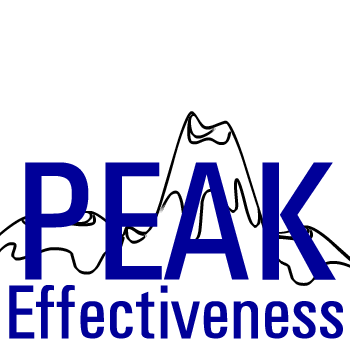






|
|
|
|
|
|
Get Engaged – At
Work and In Life!
How Can Joint Ventures Be Set Up?
You can set up a host-beneficiary deal in one of two ways -- depending upon which role you're playing. First, we will assume that you are the one whose products or services will be introduced to a host company's customers, clients or patients. Then we will assume the reverse - that you are the one who would be introducing customers, clients or patients to someone else's product or service. You see, it works equally well both ways
When trying to become the product or service being endorsed:
1. Find a target company that already has your desired customers as its customers. What type of business has products or services most compatible and suitable to your customers? What type of business or profession sells a noncompetitive but kindred product or service?
Find some reputable businesses in that business type
who has
already done your work for you by building a strong relationship with and enjoys
the strong goodwill of people in your target audience. Who has already
spent a ton of time, effort and advertising dollars to attract customers,
clients or patients that can now be yours for little more than the asking?
For example, if you're in the landscaping business and wish to obtain more landscaping customers, look at who deals with your intended prospect one, two or three transactions before they are ready to buy from you. Once you identify who those generic companies are, e.g., contractors, real estate agencies, painters, movers, then move to more specific identification.
Turn to either the Yellow Pages, or turn to a business directory and locate every builder or every contractor or every real estate company or every moving company in whatever geographic or industry segment to which you currently are marketing.
2. Visit those potential Hosts and ask their owners to introduce your product or service to their audience. Tell the business's decision maker that you believe they have enormous untapped wealth stored in their goodwill with their customers, and just because they haven't fully tapped into it doesn't mean they shouldn't. Walk them through a scenario that lets them get a share of the profits of the joint venture program.
Tell the targeted host company that you'll do everything for them and pay all costs. Assure them that they will retain 100% approval over what you do, how you do it and what you say. In essence, give them all of the control, none of the risk and a fair share of the rewards.
Take along plenty of information on what you sell, and some testimonials to its high quality. (You may not need to make a strong pitch, but it's best to be prepared.)
Again, back to the landscape example, you might tell them this:
-
I am a highly-respected landscaper in our community.
-
I would like very much to forge a strategic alliance with you.
-
The reason I'd like to do it is that I realize that you have spent an enormous amount of time, effort, emotion, energy and expense building good will with your customers.
-
Those customers--when they're done transacting business with you-- may have nothing else to bring you in the way of new business for many, many years. But there is a way, an ethical, valuable, worth-while way, you could reclaim the time, effort and expense that you invested in that relationship and do your customer or client an incredible service.
-
The difference between great landscape and just average landscape is not only the difference between potentially tens of hundreds of thousands of dollars of difference in the long-term value of a property. And, if it's a rental or an income-generating property, landscaping alone could make a difference in the rental building being filled, and commanding a premium in rents, or having a high vacancy rate and renting for a pittance. (I.e., make a short pitch of why your product or service is valuable.)
-
At the very minimum your customers will thank you for introducing me to you and helping them gain information about my top ranked landscaping service.
As a further incentive, offer the prospective "Hosts"
either
(1) reverse access to
your customers or
(2) some percentage of any sales that you
make as a result of their help PLUS
(3) some kind of preferential advantage to their customers.
Offer something the customers wouldn't get on
their own in the outside market if they stumbled into some competitor's office and bought
the product or service on their own.
In the case of the landscape example, it might be a $20,000 landscape job for $10,000, or any other landscape job for 50% off its normal rate with a bonus of $500 worth of decorative stonework absolutely free, or something like that.
Special treatment is critical to the whole dynamic of a Host/Beneficiary relationship. It's critically important that the customer or client or patient feel that the Host has gone to the mat and negotiated either
-
a below-market price or
-
an above-market benefit or bonus or guarantee that gives them extra value.
It's important that anybody you get to endorse you distinguishes their customers as being special, important and unique. You've got to show the Host that by teaming with you they have an opportunity to bring a great benefit, a great advantage, a great result to their customers or clients that they've never thought about.
If the Host company or the professional you approach has an ongoing selling relationship with their customer or client, then be prepared to show that you are not going to take a dime away from the Host. Show the Host that there's no conflict whatsoever, that there's only a complementing connection between what they do and who they do it for and what you will do.
Make your offer economically appealing enough to get the Host excited.
Confide in them that you expect the advertising/marketing costs to be lower
and the response rate and the average sale to be higher than without their
endorsement. Therefore, you feel very
comfortable offering to share what may seem a very generous, but to you a very
justifiable, amount of all new purchases resulting from their endorsement with
them. Tell the Host that there are several ways that the Host could be
compensated, such as a share of the profit, so much per customer, so much per prospect or lead or
inquiry, a fixed fee for doing it or any combination thereof, whatever seems to
best fit your situation or particular product or service. Propose to the Host the arrangement
that you, in your experience, seems to work best in terms of
fairness and simplicity.
Once you've told them what the financial consideration to them is, translate
it into terms the Host can get enthusiastic about. Use what experts call "future pacing."
Project ahead. Show your prospective Host what their share of the
proceeds could be worth, could
buy, could control or could produce.
For example, if you as the Host were a moving company, and I was talking about sharing 12 percent of my landscape fees with you, I would say: "Let me tell you what I think that means, Mr. Jones. Worst case, if my projections are correct (that's a key phrase to use--"if my projections are correct") I expect to be giving you a check for $187,000 six months from now!"
That alone--that lump-sum figure--gets people excited. But then take the process to a higher level of leverage. Show them what they can buy with that money and with subsequent money.
For example, you might say, "And if it works out, and if I'm right, you can expect a check similar to that every six months forever! What could you do with a $187,000 check twice a year for life? Well, I suppose you could basically pay off all the debt your moving company has. Or you could run ads every month in every newspaper in town. Or you could hire five new salespeople. Or you could buy yourself a million-dollar home. Or you could expand your facilities. Or you could..." Get them dreaming about things that may be important to them.
It's important that you instill in the mind of the prospective Host or endorser the fact that he or she is going to get most of the benefit from the proposition. Tell them this is a wonderful way for them to perform a market test to see how much leverage they really have with t heir customers. If you're right, they can do this for a lot of other people, and you'll even assist them if it works out! If it doesn't, the loss will be yours because you'll be the one who will have funded the program, you're the one who has extended all the effort! They will be the one who will benefit either way. And then give them the final guarantee. Give them a written guarantee that not only will you do great work, but, if there is any problem, you'll make it right.
1. Start by identifying the businesses with products or services most
compatible and suitable to your customers. Ask yourself, "Who
has a noncompetitive but kindred product or service to sell that may be
beneficial to my customers?"
2. Contact the owner, president or
general manager of the targeted sales enterprise. Introduce yourself, explain that
you've spent __ years and ___ amount of money developing goodwill with your
customers.
Explain your assumption that the target company's product would bring great value to your customers. do enough research or ask enough questions to determine whether or not the product or service is a "one shot" deal or has a back-end component. If it's a one shot, offer to split profits or sales (splitting gross sales is always preferred) with them. If it's got a good back end (and the lifetime value of the customer is far greater than the profit on the first sale), try and get all of the front-end profit and even some of the back end.
Value and respect the real worth of your endorsement to your list. Keep control. Have the orders and even the money -- if appropriate -- go through you. Also, maintain quality control on the product, promotion and customers. Stipulate upfront that all resulting customers are your proprietary property and cannot be resolicited without your written approval.
3. Put all of this in writing. Once you've made the deal, don't do things too big. First, make small tests to make sure the Beneficiary's product sells, and by which approach. If it does, offer it to all of your customers in the way found most effective. If it doesn't sell, the problem could be the choice of product / service, the price point or it could also be the follow up by the Beneficiary. Find a different product or service or approach and try it all over again.
If you don't succeed at first, it's no problem. Keep trying until you hit pay dirt. The first time you tap into your goodwill with your customers or clients by endorsing something -- sales should shoot to the moon.
Any small business or practice can and should use a Host/Beneficiary approach
several times a year because it rarely fails to generate new business.
Examples:
- A financial newsletter creating a special bonus eight-page interview with you to promote your program.
- A business-opportunity company recommending your program to all of their unsold prospects.
- A best-selling author endorsing your program.
- A magazine endorsing your program.
- A local gym helping a karate school owner get started by
letting him use their space for a fee.
- A real estate firm introducing a landscaping firm's
shrub and tree-planting service to recent home-buying clients.
- A house-painting company introducing a swimming pool distributor's "Early Season Above-Ground Pool Installation Discount"
to people who had recently had their houses painted.
- An attorney who handles heavy-duty tax cases writing a letter to his clients and, in the "P.S.," telling them they might want to look over a checklist of tax-filing hints given him by a new tax-preparation service.
A Direct Marketing Example
These joint venture marketing principles can be applied to
direct mail marketing. One company who has developed a list of customers
endorses to their customers another company's products or services. They
share in the profits.
The alternative for the beneficiary company is to rent a list of names and
addresses from a list broker. You carefully plan your offer and prepare a
killer sales letter. Your campaign becomes a winner and pulls in a 1 to 3
percent response on the offer. That is a very effective direct mail project.
With those numbers, however, you may or may not make any money.
In many cases, you don’t make very much profit on the first sale to the
customer. It is on the backend sales later on down the road that you
make your profits. As a matter of fact, many Infomercials actually lose
money on every sale they make. They are willing to lose money on thousands
of customers a month so that they can make money on the backend. They
understand the "lifetime value" of a customer. Of course this
only works if there is the possibility of second sales, such as Amazon.com does
as customers return to buy more books. (This is why many internet marketers
stress the need for "backend" products, and, lacking quality products
of their own, many end up reselling others' goods or services for a commission.
It's better to get something than nothing.)
Using endorsement offers though can change those numbers completely, even for
the first sales. The owner of the list may endorse the product or service
of the beneficiary company to the Host's customers. All that the list owner has
to do is write about the product owner’s greatness, his unmatched service, his
high quality product, and how valuable he considers this deal to be. It only
needs to be one page written by the owner of the list and inserted with the list
owner's regular sales letter.
(The introduction itself doesn't even have to be
as big a personal commitment as "endorsement" letters. In fact, the introduction could be a relatively
passive gesture - like a favorable reference to the product or service or someone simply letting you
insert your brochure in their mailing as "ride along" advertising.
After all, what is more effective public relations than a magazine - perceived
as a credible, objective third party - giving a favorable mention of a company
in an article?)
Now, this same offer (only a one page sheet of endorsement by the owner of the list) has been known to sell 10 TIMES as many products
than the product owner sending the same
mailing to the same list. That means it is possible for this offer which pulled
only a 1% - 3% response rate by itself may now pull a response rate of 10% to 30%!!! WHY? The mailing list trusts the list owner because they have
done business with them in the past and are willing to do it again based on their recommendation.
Let's take a hypothetical example:
If you were selling a $197 product to a list of 10,000 people by direct mail, and received a 1% response rate, you would make 100 sales. That would be a gross income of $19,700. If your mailing costs totaled $5,000, the list rental $2,000 ($.20 per name) and your production cost of your product were another $5,000, you would have made a profit of $7,700. In other words, your profits would have been decent, and you get to keep it all, but it is nothing to write home about.
Now, let’s take the same direct mail campaign and make it a Joint Venture. The list owner endorses your offer and you achieve a 10% response rate on the mailings. You made 1,000 sales. That would be a gross income of $197,000. The $5,000 cost of mailing stays the same, there is no list rental and the cost of your product is now $50,000. You have made a $142,000 profit. If you have agreed to split this 50/50 with the list owner, you both make a net $71,000.
Both you and the list owner make thousands more than you could have considered ever making without this partnership. Plus, more customers get to take advantage of your wonderful products or services. It is a WIN-WIN-WIN situation for everyone involved in the process.
You can even remove ALL RISK from the process. If the list owner has a newsletter which they send out to their customers regularly, he can include your product offer as a ride-along and have NO additional postage costs to include it. The entire offer would have NO risk to you or the list owner and the potential for significant profits.